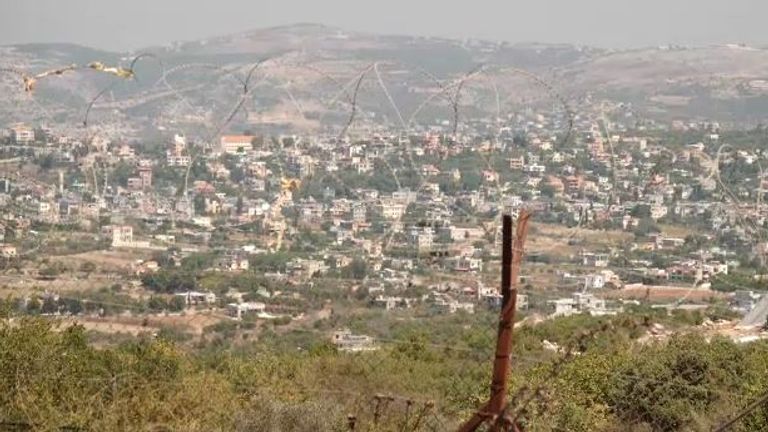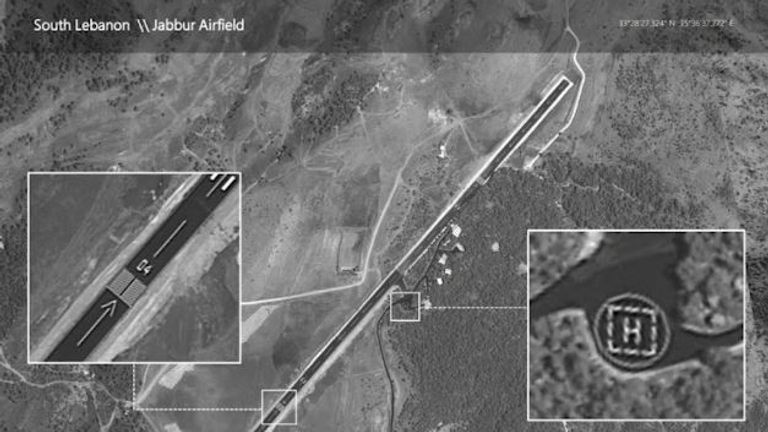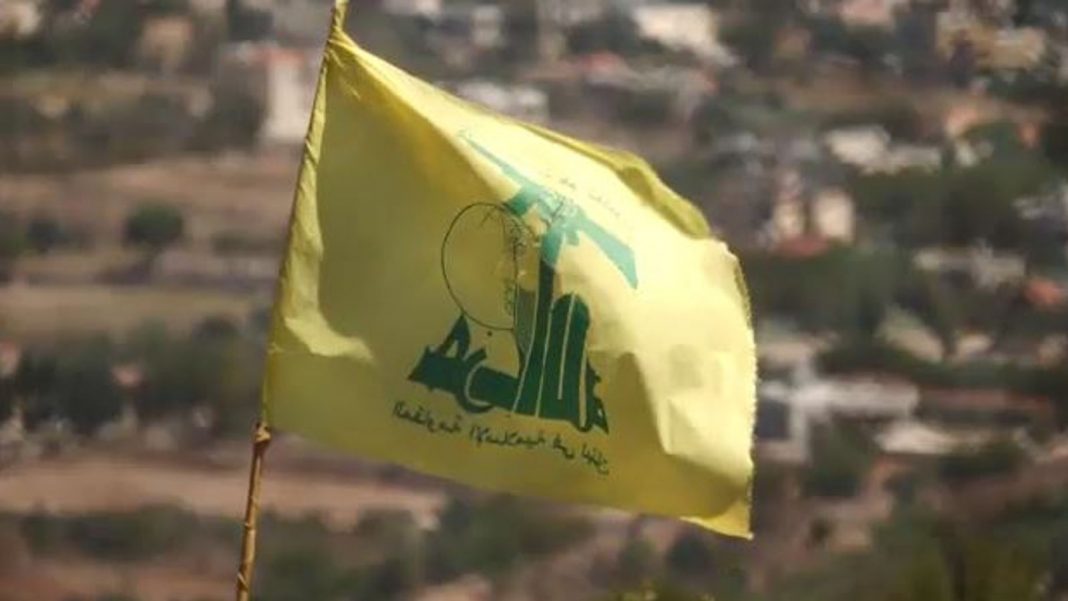Within minutes of us arriving at the border, a man appeared on the other side only a few hundred yards away, his white T-shirt picking him out among the bushes.
“Hezbollah,” our Israeli military escort explained. “He’ll take some photos of us and then leave.”
Sure enough, minutes later, the Hezbollah snapper got back on his bike and sped off to a large shed down in the valley below, a cloud of dust kicked up behind him. Job done.
The border region that separates Israel from Lebanon is a beautiful part of the Middle East – unusually green, small villages sit atop the ranging hills, overlooking deep valleys for miles around.
But the bucolic landscape is misleading. This border has long been a source of tension and the fragile situation has worsened in recent months.
The area around the border in southern Lebanon is controlled by Hezbollah, an Islamist group supported, armed and funded by Iran.
Hundreds of barrels, painted in the blue of the United Nations, mark the agreed demarcation
Hundreds of barrels, painted in the blue of the United Nations, mark the agreed demarcation along the 120km from the Mediterranean in the west, and over the hills to the Golan Heights up in the north and UN peacekeepers patrol the border area.
Israel is building a new concrete barrier on its side of the border, to protect villages nearby and provide an extra layer of defence.
Hezbollah is much more capable, and much better armed than other regional Islamist groups like Hamas and Islamic Jihad and its soldiers have recent battlefield experience fighting in Syria.
Israel and Lebanon last fought a conflict in 2006, but with no armistice signed they officially remain at war.
Both sides talk of a “mutual deterrence”, with the understanding that a new war would be extremely bloody for both sides.
“They (Hezbollah) have been fortifying themselves and building their forces since 2006 with advanced projectiles that can arrive all the way to Tel Aviv,” Lt Col Richard Hecht, the international spokesman for the Israeli Defence Forces told me.

Israel and Lebanon officially remain at war
“Long-range, precise (missiles), which are entrenched within their population in southern Lebanon. It’s a big, big build-up of force, which is a concern.”
So, for now, the two sides watch each other closely over this border, monitoring every move the other makes.
Later, as we filmed on the roof of an Israeli forward base, we watched two Hezbollah fighters dressed in black perched on a rock, metres from an Israeli tank inspecting the fences.
A few weeks earlier, the yellow flag of the Islamist group had been planted, provocatively, within spitting distance of the fence. It’s just a flag, but it’s also a sign that Hezbollah are feeling increasingly emboldened.
Both sides regularly cry foul, blaming each other for violating their land.
Read more:
Two women killed in West Bank shooting
Leaked ‘secret’ meeting between Israel and Libya sparks riots
Biden and Netanyahu in icy exchange over Israel’s judicial reform
Israel flies regular sorties through Lebanese airspace without permission, to bomb Iranian targets over the border in Syria and the village of Ghajar in the north is claimed by both sides although currently controlled by Israel.
Hezbollah recently pitched two military-style tents on the Israeli side of the Blue Line and refused to move, forcing Israel to plead with the UN to intervene.
In March this year, a militant crossed from Lebanon into Israel and detonated a roadside bomb about 35 miles inside the border. One person was injured but it could have been much worse.
It’s not clear who ordered this attack. In April, a salvo of rockets were fired into northern Israel and although Hamas factions were blamed, it’s unlikely they acted without Hezbollah knowledge.

Israel has released satellite images of an airstrip under construction in southern Lebanon
And then last week, Israel revealed satellite images of an airstrip under construction in southern Lebanon, close to the border, built, Israel claims, with Iranian money.
So why is the situation so tense right now?
It is possible that Hezbollah, and its leader Hassan Nasrallah, are taking advantage of the divisions over judicial reforms inside Israel and see this as an opportunity to test their enemy.
But Lebanon has its own domestic problems – the economy is going through one of the worst periods of hyperinflation in global history, repeated attempts to appoint a new president have failed, fuel is in short supply, there are rolling blackouts, and many of the middle classes are fleeing for better conditions abroad.
From Israel’s point of view, a war with Hezbollah would unlikely be confined to Lebanon. Hamas would probably get involved from Gaza and use its factions in the West Bank too. A multi-fronted conflict would be very dangerous and hard to contain.
Amid the growing talk of another conflict, there are some small positive signs of hope. Last year, the US brokered an agreement between Israel and Lebanon, establishing a maritime border out into the Mediterranean.
This in turn allowed both countries to start exploring a gas field that straddles that border. And Israeli commanders meet with their Lebanese counterparts every four weeks or so, aided by the UN.
“If Hezbollah attacked us, we would destroy Lebanon,” a senior Israeli commander told me, bluntly.
He’s probably right, but Hezbollah wouldn’t be defeated easily.







